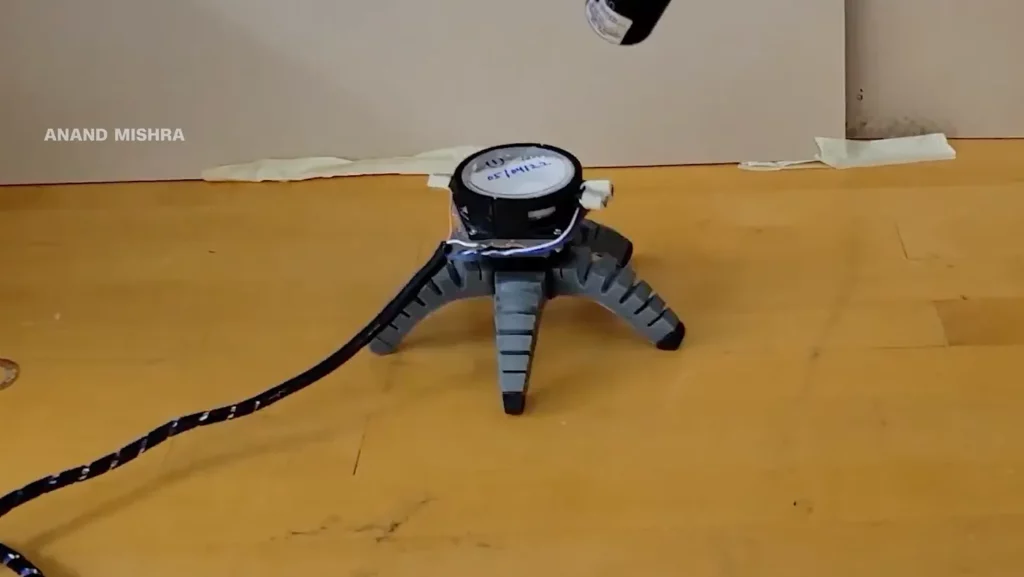

Moon GPS is Coming
“There hasn’t been a thrust to translate all the communication and navigation infrastructure that exists on Earth to anywhere else in the solar system—until now,” says Bijunath Patla, a theoretical physicist at the US National Institute of Standards and Technology (NIST) who has published research into the logistics of these efforts. “This is the time when people are thinking of such a leap in technology.” This leap is propelled by a surge of planned activity and exploration on the moon in the coming years that will demand sophisticated logistics, including the type of position, navigation, and timing (PNT) systems that underpin practically all of our infrastructure on Earth. The NASA-led Artemis Program aims to send astronauts on surface missions at the lunar south pole, a goal that necessitates reliable lines of communication and precision location services. China also plans to land crews on the moon this decade, and a host of other governmental and corporate entities are dispatching robotic explorers to the lunar surface in the near future.” (Wired)
A weekly dispatch featuring exclusive interviews with deep tech founders & a roundup of the most important deep tech news.

- China warns Japan of retaliation for possible new chip curbs
- How plants could mine metals from the soil
- US targets China with quantum and chip-related export curbs
- Boom Supersonic’s XB-1 prototype aces 2nd test flight
- BMW tries “motionless” wind tech on UK plant roof
- The New Glenn rocket’s second stage set to roll to the launch pad on Monday
- Swedish startup bets big on zinc-ion batteries with world’s first megaplant
- Europe’s semiconductor sector calls for immediate ‘Chips Act 2.0’
- The US Navy is going all in on Starlink
- NASA’s new solar sail extends its booms and sets sail
- SpaceX cleared to fly Falcon 9 rocket after landing mishap



- Scientists use magnetic nanotech to safely rewarm frozen tissues for transplant
- Breakthrough promises new era of ultraprecise nuclear clocks
- Researchers develop molecular biosensors that only light up upon binding to their targets
- Scientists make ‘cyborg worms’ with a brain guided by AI
- Higher-order topological simulation unlocks new potential in quantum computers
- A device to sort photon states could be useful for quantum optical computer circuits
- 3D bioprinting materials offer possibility for better bone and soft tissue repair

- OpenAI co-founder raises $1B to build safe, powerful AI
- Sakana AI scores $100M to challenge OpenAI, Anthropic as ‘world class’ AI lab
- Here’s who’s investing the most in deeptech so far in 2024
- SET Ventures doubles the size of its last fund with €200M for climate tech adoption startups
- French cleantech startup Calyxia nets $35M to tackle microplastics pollution
- TotalEnergies to invest $444M in new joint venture with Adani Green to develop solar projects in India
- Oxylus Energy strikes “beautiful balance” to make e-fuels for aviation and shipping
- SparkLabs, an early-stage venture capital firm, closes $50M fund to back AI startups
- Palantir’s CTO, and 13th employee, has become a secret weapon for Valley defense tech startups
- Battery manufacturing startup 24M raised an $87M Series H
- Carbon capture startup Mantel raised a $30M Series A

Did Sandia use a thermonuclear secondary in a product logo? / AI worse than humans in every way at summarising information, trial finds / Sailors hid an unauthorized Starlink on deck of a US warship–and lied about it / Nanoplastics have potential to cross blood-brain barrier, study reveals / Introducing the AI Data Center Database / How the Designer of the First Hydrogen Bomb Got the Gig / A brief history of barbed wire fence telephone networks / Solar will get too cheap to connect to the power grid
